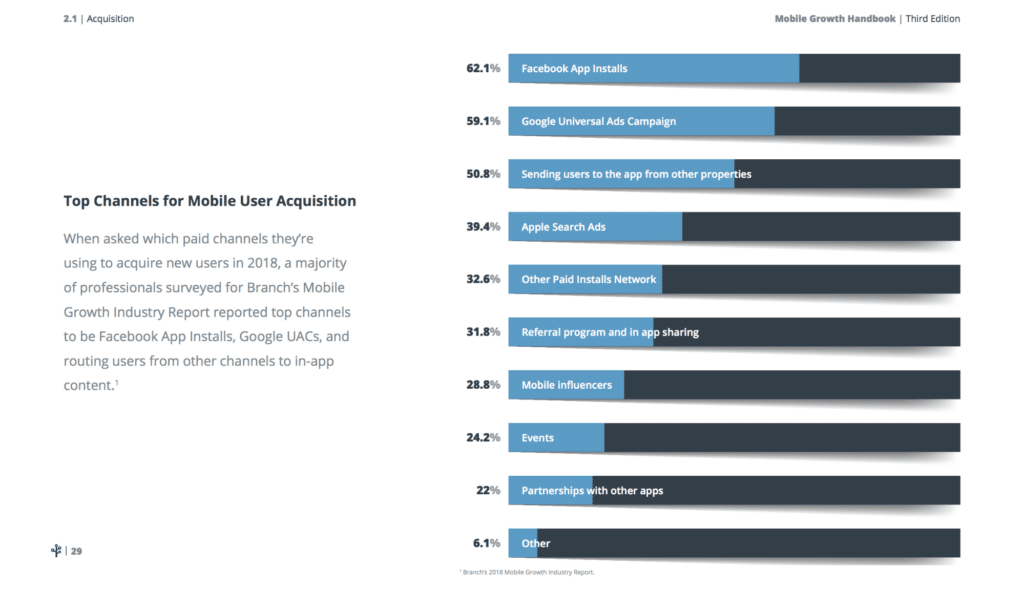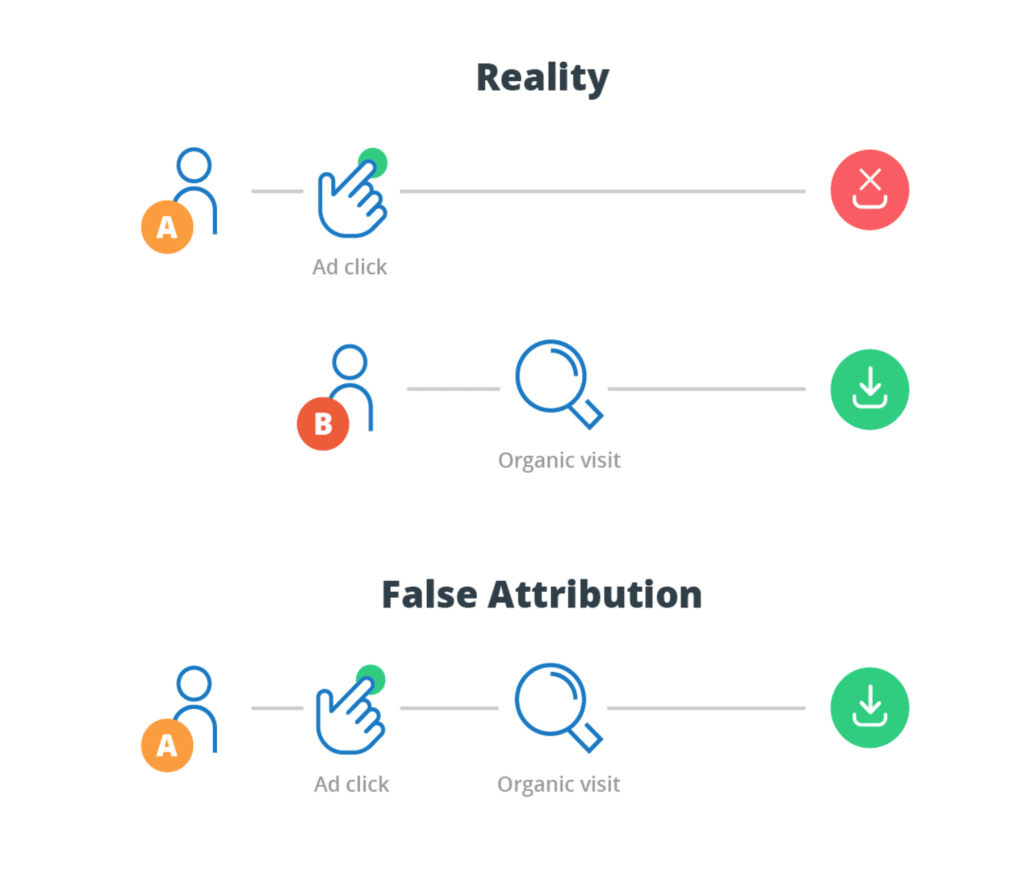In this complex cross-platform world, figuring out how to determine the true source (or sources) of downloads for your iPhone or Android app is just as important as figuring out how to get more app downloads. Establishing methods of tracking paid app downloads and organic app downloads enables mobile marketers to remove the guesswork from their growth stacks.
In fact, the urgency behind managing and optimizing cross-channel, cross-platform attribution flows for iOS and Android mobile apps is only increasing.
As reported in our 2018 Mobile Growth Handbook, marketers are relying on more mobile channels and platforms than ever before to drive mobile app installs—everything from Apple Search Ads and social platforms like Facebook to Google Universal Ads campaigns and partnerships with other apps or social influencers.
The Shortcomings of Basic Probabilistic Modeling
Historically, the traditional approach to attribution has involved basic probabilistic modeling, a method that can be flawed by its own impersonal approach to collecting and processing data. This method relies on measuring and matching user IP addresses, as well as user agents (such as the device model and the device’s operating system), across channels and platforms.
While this may sound like an effective approach on the surface, if time elapses between the ad click and the app download, the ad that generated the app install will not be given credit, since the user’s app install will be separated from the pre-install ad click. This can be a particularly salient issue in areas with less stable phone service and web connectivity, where the install process can take longer to unfold.
Alternatively, if two users rely on the same network or connection to engage with the same device model and operating system, a fingerprinting approach to attribution will unify the behavior of these users, thinking them the same. This leads to a phenomenon known as false attribution.
Branch’s Attribution: A Cross-Channel, Cross-Platform Solution
Where basic probabilistic modeling relies on information that isn’t specific to individuals, Branch’s attribution model uses data unique to each mobile user to measure user behavior (such as mobile app download or in-app conversion) across channels and platforms. Marketers can scalably unify and de-duplicate users that interact with their brands across the mobile web, the app, social channels, email, and all other channels and platforms. In 2018, the overwhelming majority of users interact with brands across one or more of these channels—and you can’t optimize these channels effectively without replacing siloed insights with cross-platform ones.
Accurate Android and iOS app install tracking is made achievable through Branch’s attribution thanks to the deployment of Branch’s link graph, our vast, global network that merges cookies on the web with IDFAs and GAIDs inside apps. These cross-platform link graphs are reliable, permanent, and do not require methods used by basic probabilistic modeling.
Let’s take a look at an example of Branch attribution in action. Say, for instance, you’ve just moved to a new city or town, and you’re looking to get to know your neighbors—you might see a Facebook App Install ad for Nextdoor, click it, and open the Nextdoor website. Then, perhaps you get distracted for a couple of days before remembering Nextdoor and searching for the app directly in the App Store. Finally, you install the Nextdoor app and begin networking with your neighbors.
With a legacy attribution provider, this install registers as an organic App Store download, while a cross-platform attribution provider rightfully recognizes the role the initial Facebook ad played. Unattributed conversions devoid of source data almost always over-inflate organic install counts, while underrepresenting the true value of channels like paid marketing that happen outside of the App Store.
The bottom line is this: today’s leading marketers aren’t settling for last-click attribution models, or for models that rely solely on fingerprinting—the cross-platform world is simultaneously too fast-paced and too circuitous, and the stakes are too high.
Instead, savvy marketers are maximizing their growth and setting themselves up for success with an attribution model that measures people rather than cookies while providing data (and resulting insights) that they can trust.
Without clean, clear data that has been de-duplicated and zoomed out to account for a user’s full pre-install journey, you can’t be sure that you’re best using your treasured marketing budget to buy app downloads. You can’t rely on an incomplete picture if you want to boost downloads for your mobile app in an app ecosystem that’s more competitive than ever before.
Between A/B testing and juggling different approaches and best practices, optimizing mobile app install campaigns to figure out how to get more app downloads across iOS and Android is tricky enough. Measuring campaign performance should be a relative snap—and, with Branch’s attribution, it is.
Interested in learning more about how Branch’s attribution solution can streamline and optimize your mobile app’s cross-channel, cross-platform measurement? Request a Branch demo—we’d love to help you solidifying your mobile measurement strategy.

























